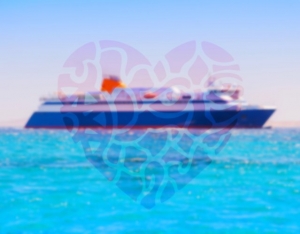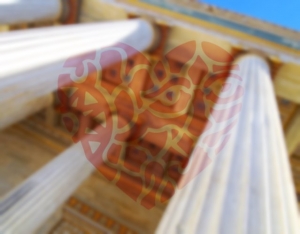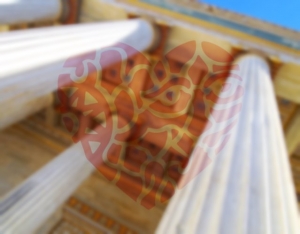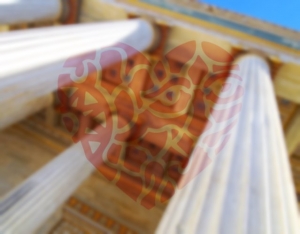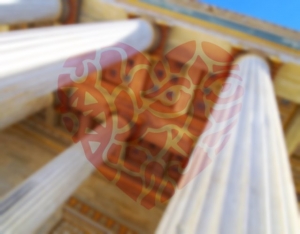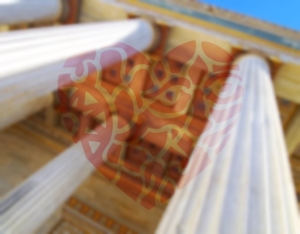Thodoris Bgenopoulos
In ancient times the island was known as Psyra or Psyria. Actually, Homer mentions in the Odyssey. Archaeological findings show that Psara have been inhabited since the fifth millennium BC.
Yet, the most important chapter in the history of Psara was not written until 1821. Psara was one of the first islands to revolt against the Ottoman Empire, raising the banner of revolution in 1821. At that time, the island prospered thanks to its fleet, which was the third power in Greece after Hydra and Spetses.
The Ottoman Empire was determined to suppress the revolution, so it sent large army and navy to occupy the island. On June 21, 1824 the Turkish forces landed on the island after a fierce resistance of the defenders. Historical sources suggest that the rudders of Psara ships were removed from islanders themselves in order to strengthen their zeal for resistance in the land. If this actually happened, it certainly was a major strategic mistake. After the Turkish forces landed on Psara, one-to-one battles followed throughout the island. Last of resistance defenders Psara Palaiokastro, the bastion above the city. There, a few hundred residents of the island resist strongly and when their defense is broken and they realize that all hope is gone,Antonis Vratsanos fires and blows up the powder keg storage of the fortress.
The occupation of Psara followed an appalling slaughter. The inhabitants that did not die on the spot were sold as slaves. Few managed to save themselves and settle in Monemvasia and later in todays Eretria, who was then named new Psara. Psara remained under Turkish occupation although many residents returned to them, especially at the end of 19th century. In 1912 the Greek destroyer "Ierax" commanded by captain Vratsanos, descendant of Antonis Vratsanos who had blown Palaiokastro, sets Psara free and it is finally permanently incorporated to Greece.
Psara is located in the northeastern part of the Aegean sea. To its west we find the island of Chios at a relatively short distance. The two island are connected by ferry.
The size of Psara is quite small, with an expansion of not more than 40 square kilometers and a coastline reaching 45 km. Although its size, the island has an extremely rich history, playing a vital role in the Greek struggle for national liberation from the Turks. And thats something it paid dearly. In 1824 the Turkish forces landed on Psara and slaughtered the whole population of the island, who reportedly approached the 30 000 inhabitants back then. Since then, Psara were deserted and today the permanent residents are not more than 500, almost all concentrated in the village in the southern part of the island.
If you choose Psara for your holidays you will be impressed by the pristine beauty of the land and the simplicity and its inhabitants. It is definitely worth visiting the house of the heroic captain and later Prime Minister of Greece, Konstantinos Kanaris, the Monastery of the Dormition of Virgin Mary, as well as Mavri Rahi(=Black Ridge)/Palaiokastro, the monument of those who fell heroically in 1824.
Kastellorizo is in the easternmost point of the Dodecanese.
The island is also known as Megisti and although it is 72 nautical miles away from Rhodes, it is just 2 nautical miles away from the coast of Turkey.
One cannot help but notice the impressive red rock that towers above the village. Upon it a castle was built, called "red castle" (Castello Rosso and therefore Kastellorizo).
Being the largest island of a cluster of 14 islands in the region, it takes the name Megisti(=the biggest). Among the rest, Ro is the most known. Kastellorizo has an area of just over 9 square kilometers. The highest point of the island is Vigla at an altitude of 273 meters.
Start you exploration of Kastellorizo, by taking a walk in the beautiful village amidst the traditional colorful houses. If the landscape reminds you of something, it is because here the Oscar-winning film «Mediterraneo» was filmed.
Continue uphill to the Castle of the Knights and enjoy breathtaking views from the top of the red rock. Visit the archaeological and folklore museum and learn more about the history of Kastellorizo. Discover Palaiokastro, the ancient acropolis of the island. Must-do: charter a boat from the port and visit the Blue Cave and why not check out the nearby islands of Ro and Strogyli.
When your walk comes to an end, close your day with fresh fish and local specialties in the excellent restaurants and taverns of the island. Afterwards, enjoy your afternoon coffee or cocktail and relax in the great cafes and bars. The cozy guest houses and the hospitable people of Kastellorizo will make your holidays unique.
Naxos is an island that takes care to preserve its traditions and customs.
The carnival in Naxos is of great significance--and fun. Apart from the typical masquerade, the people of Naxos have kept several local customs, such as the "koudounatoi" (men wearing bells run from house to house making noise so as to exorcise the "evil") and "kordelatoi" (men wearing the national dress and colorful ribbons).
Easter in Naxos is a very beautiful experience indeed. The procession of the Epitaph in solemn atmosphere (especially in the island's villages), the Resurrection followed by spectacular fireworks and of course the Easter feast, will make your vacations in Greece unique!
Of course, several panigiria-festivals are organized in Naxos, including:
• July 8, feast of Agios Prokopios in Agios Prokopios
• July 27, feast of Agios Panteleimon in Agersani
• August 6, the day of the Savior in Kourounohori
• August 15, feasts in many villages of the region
• August 29, feast of Agios Ioannis in Agersani, Apeiranthos and Apollo
• September 14, the day of the Cross at Tripodes
There are also many feasts in Naxos that are created around local products, such as the Fisherman's Festival (June 28 in Apollo village), the Wine Festival and the Potato Festival. Each celebration is accompanied by the appropriate product and of course the traditional feast and the hospitable spirit of the islanders.
The Epitope Museum of Naxos is in Chora.
This is a very special museum that you will rarely find anywhere else. The Epitope Museum houses the archaeological findings exactly where they were discovered (which is why it is called "epitope"=on the spot). Here you can see walls dating back to the Mycenaean era and ceramics workshops with their equipment. A little further, a tomb of a later date has been discovered, from which one can see an offering table and vases.
The very special Epitope Museum will let you in a different view of history and museums!
The Geological Museum of Apeiranthos is in Apeiranthos village in Naxos.
The Geological Museum is housed in the Municipal school of Apeiranthos and it is considered to be one of the best of its kind. The museum has more than 2500 exhibits, divided into 6 sections: Smyrida (Emery), Naxos Marble , Cyclades, Greece, Paleontological and World.
The pride of the museum is Smyrida (=Emery), the local stone known as "Naxos stone." Among the other exhibits, those to stand out are:
• Volcanic rocks from Santorini (Thera)
• Volcanic rocks from Etna and Vesuvius
• Obsidian from Milos
• Fossilized bones of a dwarf elephant
The Geological Museum of Apeiranthos features a shop too, where you can find very special items and souvenirs.
If you find yourself in Apeiranthos, you HAVE TO visit the Geological Museum of Apeiranthos.
The Natural History Museum of Apeiranthos is situated in Apeiranthos village, in Naxos.
It is divided into two sections, being dedicated both to sea and land.
The marine part of the museum hosts an impressive collection of hundreds of shells, fish and dolphins' skeletons and a sperm whale's skull (!).
In the section of the museum dedicated to land, you will see representative samples of the fauna and flora of the island and several findings from the catchment basin of the Perachoritis torrent.
The Natural History Museum of Apeiranthos is definitely worth-seeing!
The Archaeological Museum of Apeiranthos is in Apeiranthos village in Naxos.
The Archaeological Museum of Apeiranthos is a small museum housing findings discovered in the area of Apeiranthos. Among the exhibits the visitor will admire:
• Stone slabs with inscriptions on rocks that depict scenes of everyday life
• Cycladic figurines and vases
• Sculptures and architectural buildings
• Weapons and tools
The Archaeological Museum of Apeiranthos is a great option to discover history... More information about the Archaeological Museum of Apeiranthos can be found in the number 22850 61725.
The Folklore Museum of Apeiranthos is in Apeiranthos village in Naxos.
The Folklore Museum of Apeiranthos is housed in a traditional building right in the village square. The museum hosts more than 1200 exhibits, all being donations by the island's residents.
Among others, you will see:
• Furniture and household utensils
• Agricultural tools
• Musical instruments
• Traditional costumes
• Beautiful weavings
The Folklore Museum of Apeiranthos also features a gift shop and with its interesting exhibits, gives visitors a sense of old life.

